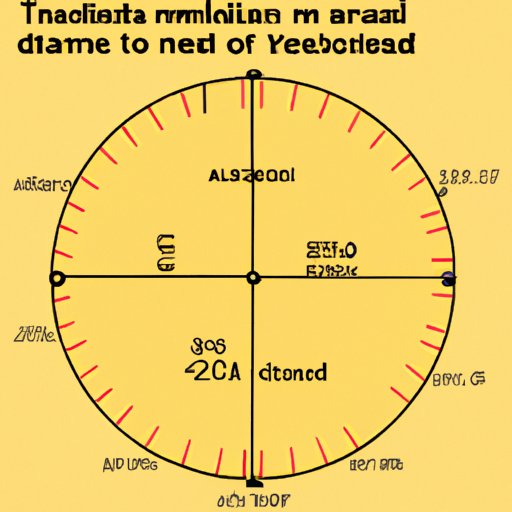
Introduction
Converting from radians to degrees is a fundamental concept in math and physics. Whether you’re a student learning about trigonometry or a professional working in STEM fields, knowing how to make this conversion is crucial. In this article, we’ll explore everything you need to know about converting radians to degrees, including a step-by-step guide and real-world applications.
What are Radians and Degrees?
Before we dive into the process of converting radians to degrees, it’s essential to understand what radians and degrees are and how they differ. Radians and degrees are units of measurement used to describe angles. Degrees are more commonly used and are the unit of measurement most people are familiar with. Radians, on the other hand, are less common and may be unfamiliar to some.
Converting Radians to Degrees: A Step-by-Step Guide
We can calculate degrees by multiplying the radian measurement by 180 /π. To convert from radians to degrees, follow these steps:
- Take the value of radians you want to convert.
- Multiply this value by 180 /π (that’s about 57.29 degrees per radian).
- The result is your answer in degrees.
Here’s an example:
π / 4 radians × 180 / π = 45°
This means that π/4 radians is equivalent to 45 degrees.
Comparing Radians and Degrees
The primary difference between radians and degrees is that degrees are based on a circle with 360 degrees, while radians are based on the radius of a circle. Radians are often used in more complex mathematical calculations because they provide better precision than degrees. However, degrees are easier to understand, and many everyday measurements are made in degrees.
Real-World Applications of Converting Radians to Degrees
As mentioned, radians to degrees conversions are used in numerous fields. Here are a few examples:
- Weather Forecasting: Meteorologists use radians and degrees to measure and analyze temperature, atmospheric pressure, and wind speeds to make weather predictions.
- GPS Navigation: When traveling from one point to another, GPS devices rely on radians and degrees to determine the best route.
- Astronomy: Astronomers use radians and degrees to study the movements of planets and stars.
Quick Tips for Converting Radians to Degrees
If you need to convert radians to degrees frequently, there are several tips and tricks that can make the process easier. Here are some useful suggestions:
- Memorize key measurements. Knowing the degree measurement for 30, 45, and 60 degrees (pi / 6, pi / 4, and pi / 3 radians) can help speed up the conversion process.
- Use conversion tables. There are numerous conversion tables available online that you can use to quickly convert radian measurements to degrees.
- Use a calculator. If you don’t want to calculate the conversion yourself, you can use an online calculator to get an accurate measurement.
Historical Origins of Radians and Degrees
The concept of measuring angles dates back to Ancient Greek mathematics. Degrees were first used by the Babylonians around 400 B.C.E., while the concept of radians wasn’t introduced until around 1600 C.E. by Johannes Kepler.. Today, radians and degrees are fundamental concepts in mathematics and are used extensively in many fields of study.
Q&A: Common Questions About Converting Radians to Degrees
Here are some common questions that people have about converting radians to degrees:
- Do I need to know how to convert radians to degrees for school? Yes! Understanding radians and degrees is crucial for anyone studying math or physics.
- Which is the easier unit to work with? Degrees are usually considered easier because they’re more common and easier to visualize than radians.
- Why are radians important? Radians are important because they provide more precise measurements than degrees, which can be crucial in complex mathematical calculations.
A Comprehensive Guide to Radians
Radians are used extensively in trigonometry and calculus, so it’s essential to have a good understanding of what they are and how they work. Here’s a quick summary:
Radians are a unit of measurement used to describe angles. They are based on the radius of a circle and are calculated by dividing the length of the arc along the circumference of a circle by the radius. Radians are a fundamental concept in calculus, as they enable us to describe changes in slope, which is essential for understanding the rate of change in a wide range of applications.
Conclusion
Converting from radians to degrees is a critical skill for anyone working in math or physics. With this guide, you should now understand the differences between radians and degrees, know how to make the conversion, and have an appreciation for the real-world applications of these concepts.




